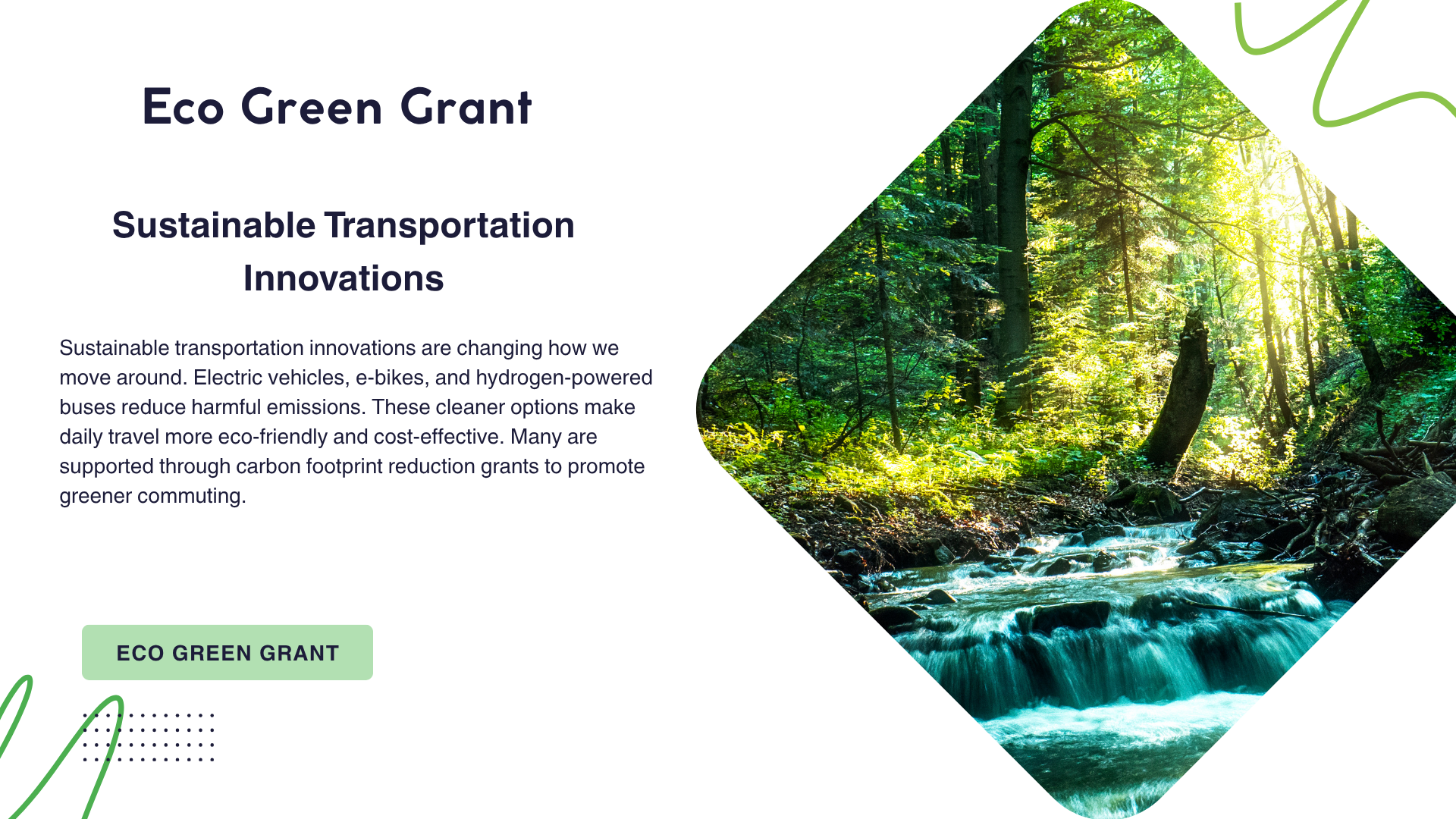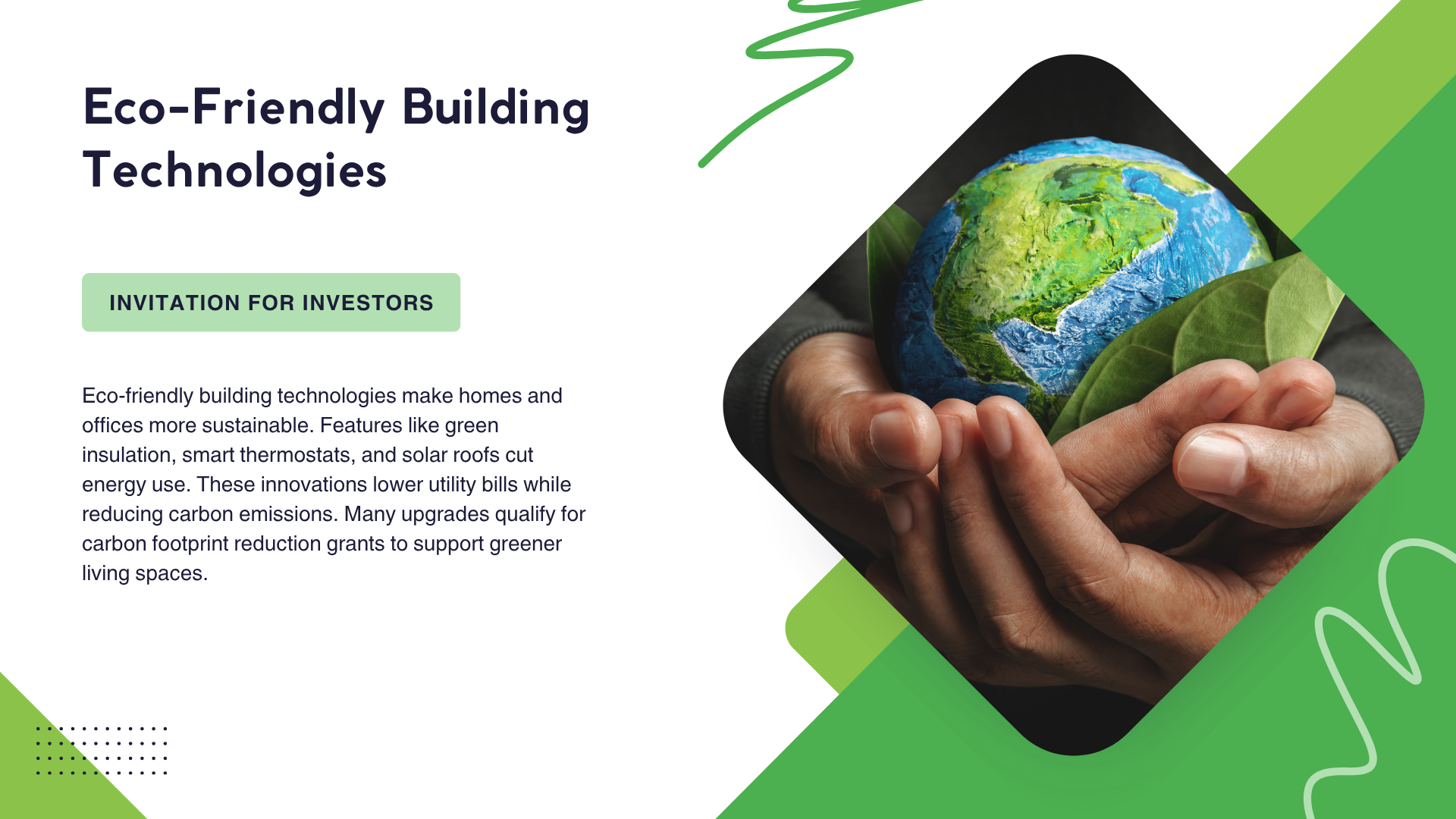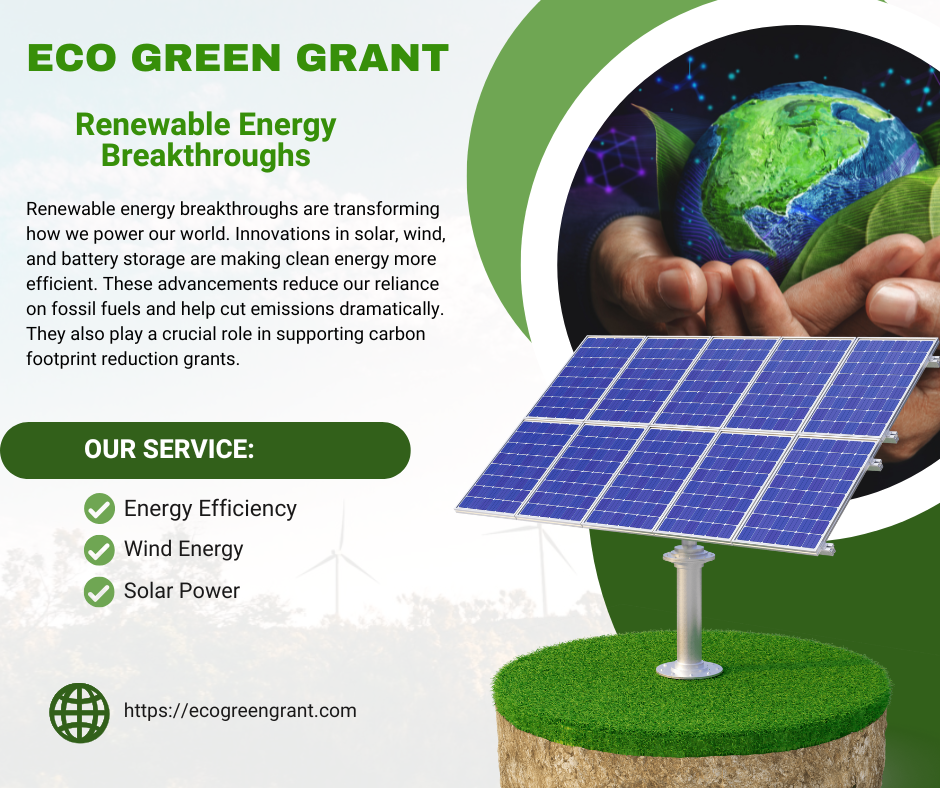Green technology innovations are reshaping how we interact with the environment, offering exciting solutions to reduce pollution, save energy, and protect our planet. From solar power breakthroughs to eco-friendly building materials, these advances bring hope for a cleaner, greener world. Local communities and businesses are increasingly supported by initiatives like the Eco Green Grant, which fuels these sustainable projects. In this article, we’ll explore the most impactful green technology innovations and how they benefit everyday life.
Renewable Energy Breakthroughs
Renewable energy forms the backbone of green technology innovations, providing cleaner alternatives to fossil fuels. By harnessing natural resources like sun, wind, and water, renewable energy systems reduce carbon footprints and power homes sustainably.
Solar Power Advancements
Solar technology has seen incredible improvements, with more efficient and affordable panels hitting the market. These panels capture sunlight and convert it into electricity, helping homeowners cut energy bills. Programs like the Eco Green Grant often assist in funding solar installations, making the switch easier for communities.
Wind Energy Developments
Modern wind turbines are now quieter, more efficient, and adaptable to various environments, including offshore setups. Wind farms contribute significantly to green energy production, reducing reliance on traditional power plants and decreasing greenhouse gas emissions through the Energy Company Obligation.
Hydroelectric and Tidal Innovations
Hydroelectric power remains a reliable source, with new turbine designs minimizing environmental impact. Tidal energy, capturing the movement of ocean tides, is emerging as a promising green technology innovation, especially for coastal regions seeking sustainable power solutions.
Energy Storage Solutions

Storing renewable energy efficiently is crucial to ensure a steady power supply. Innovations in energy storage technology are helping to balance demand and reduce waste, making green energy more reliable.
Battery Technology Improvements
New battery materials and designs have increased storage capacity and lifespan. Lithium-ion batteries are common, but emerging alternatives like solid-state batteries promise even greater efficiency, supporting the wider use of renewable energy in homes and vehicles.
Grid-Scale Energy Storage
Large-scale storage systems stabilize power grids by storing excess energy during low demand and releasing it during peak times. This technology supports the integration of renewable sources into national energy networks and is vital for consistent green energy availability, especially when combined with Heat Pump Installation.
Smart Energy Management
Smart grids and home energy management systems optimize electricity use by learning consumption patterns and adjusting accordingly. These technologies help consumers save money and reduce environmental impact, often with incentives from programs like the Eco Green Grant.
Sustainable Transportation Innovations

Transportation is a major source of pollution, but green technology innovations are transforming the sector with cleaner, more efficient options.
Electric Vehicles (EVs)
Electric cars produce zero tailpipe emissions and are becoming more affordable and practical with improved battery life. Public charging infrastructure is expanding, and incentives like grants and rebates encourage drivers to make the switch to EVs.
Hydrogen Fuel Cells
Hydrogen fuel cell vehicles emit only water vapor and offer longer driving ranges than traditional EVs. This green technology innovation is gaining attention for heavy-duty trucks and public transportation, where batteries may fall short.
Shared and Autonomous Mobility
Ride-sharing and autonomous vehicles optimize routes and reduce traffic congestion, lowering emissions per trip. These innovations promote smarter urban transportation and help cities become greener and more livable.
Eco-Friendly Building Technologies

Green technology innovations in construction help reduce energy consumption and minimize waste, making buildings more sustainable.
Energy-Efficient Materials
Materials like insulated concrete, recycled steel, and bamboo help buildings retain heat and reduce energy needs. These sustainable options are gaining popularity in both new constructions and renovations, supported by professional Insulation Installation Services.
Smart Home Systems
Smart thermostats, lighting, and appliances learn user habits and optimize energy use automatically. These technologies provide comfort while cutting utility bills and environmental impact.
Green Roofs and Walls
Plants on rooftops and building facades improve insulation, reduce urban heat islands, and support biodiversity. They also absorb rainwater, reducing runoff and protecting local waterways.
Waste Reduction and Recycling Technologies
Testimonials

Managing waste effectively is essential for environmental health. Innovative technologies are helping communities recycle more and reduce landfill use.
Advanced Recycling Methods
New sorting technologies, such as AI-driven robots, improve the efficiency and accuracy of recycling centers. These advancements increase the quality of recycled materials, making them more valuable for manufacturing.
Composting and Biodegradable Materials
Composting food and organic waste turns it into nutrient-rich soil, reducing landfill methane emissions. Innovations in biodegradable packaging offer alternatives to plastics, helping to decrease pollution.
Circular Economy Models
This approach designs products with reuse and recycling in mind, keeping materials in use longer. Businesses adopting circular models reduce waste and often benefit from incentives like the Eco Green Grant.
Water Conservation and Management

Water is a precious resource, and green technology innovations help conserve and manage it more efficiently.
Smart Irrigation Systems
These systems use sensors and weather data to water plants only when needed, saving significant amounts of water in agriculture and landscaping.
Water Recycling Technologies
Greywater recycling and wastewater treatment innovations allow communities to reuse water safely for irrigation and industrial purposes, reducing overall consumption.
Rainwater Harvesting
Collecting and storing rainwater for household or agricultural use lessens reliance on municipal water supplies and supports sustainable water management practices.
Green Agriculture Innovations
Sustainable farming methods powered by technology help feed the world while protecting natural resources.
Precision Agriculture
Using drones, sensors, and GPS technology, farmers can apply water, fertilizers, and pesticides precisely where needed, reducing waste and environmental impact.
Vertical Farming and Hydroponics
Growing crops in controlled indoor environments uses less land and water than traditional farming, offering fresh produce year-round even in urban settings with support from Eco-Friendly Business Grants.
Organic and Regenerative Practices
These farming methods focus on soil health and biodiversity, promoting long-term sustainability and often qualifying for grants supporting green technology innovations.
Community and Policy Support for Green Tech
Technological innovation thrives with the right community engagement and policy frameworks that encourage sustainable practices.
Government Grants and Incentives
Programs like the Eco Green Grant provide vital funding to local projects, helping communities adopt and benefit from green technologies.
Education and Awareness
Local workshops, school programs, and online resources educate residents about green technology innovations and how to incorporate them into daily life.
Public-Private Partnerships
Collaborations between governments, businesses, and nonprofits accelerate the development and deployment of sustainable technologies for broader impact.
FAQs
What are green technology innovations?
Green technology innovations refer to new and improved technologies designed to reduce environmental impact, promote sustainability, and conserve natural resources. These include renewable energy, energy storage, sustainable transportation, and eco-friendly building materials.
How does solar power fit into green technology innovations?
Solar power is a key part of green technology innovations because it uses sunlight to generate clean electricity. Advances in solar panel efficiency and affordability have made it one of the most popular renewable energy sources.
What role does the Eco Green Grant play in supporting green technologies?
The Eco Green Grant helps fund community projects and businesses to adopt green technologies, making sustainable practices more accessible and affordable for many people.
Why are energy storage solutions important for renewable energy?
Energy storage solutions, like advanced batteries, allow excess energy produced by renewables to be saved and used when demand is high, ensuring a steady and reliable power supply.
How do electric vehicles contribute to reducing pollution?
Electric vehicles produce zero tailpipe emissions, reducing air pollution compared to traditional gasoline cars. They are a significant green technology innovation transforming the transportation sector.
What are some examples of eco-friendly building technologies?
Examples include energy-efficient materials like insulated concrete, smart home systems that optimize energy use, and green roofs that provide insulation and reduce urban heat.
How does smart irrigation help conserve water?
Smart irrigation systems use sensors and weather data to water plants only when necessary, reducing water waste in agriculture and landscaping.
What is the circular economy model in waste management?
The circular economy model designs products for reuse and recycling, keeping materials in use longer and reducing waste sent to landfills.
How can communities get involved in green technology innovations?
Communities can participate by applying for grants like the Eco Green Grant, attending educational programs, and supporting local sustainable projects.
What are the benefits of precision agriculture?
Precision agriculture uses technology to apply water, fertilizers, and pesticides more efficiently, reducing waste, lowering costs, and minimizing environmental harm.







